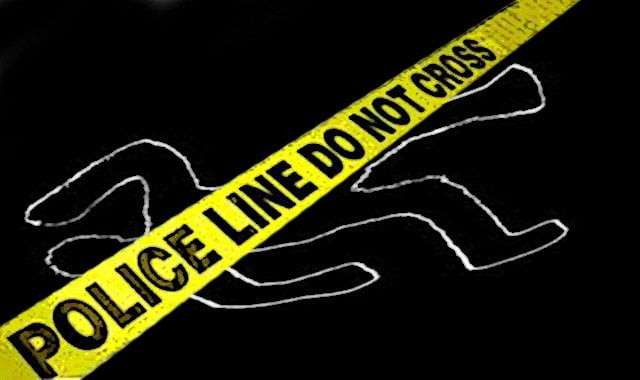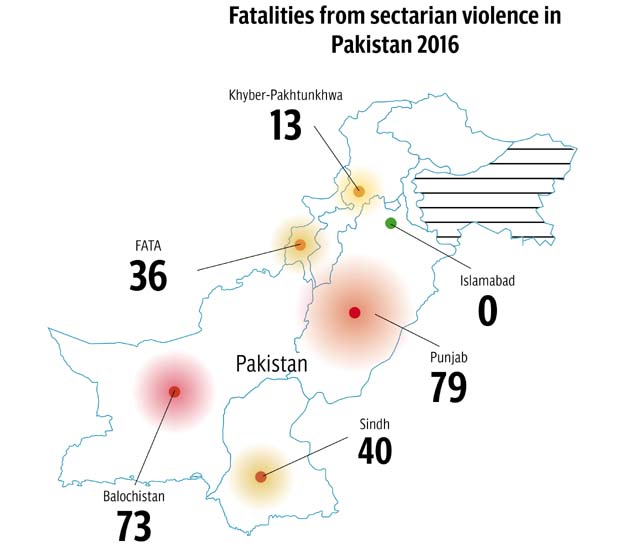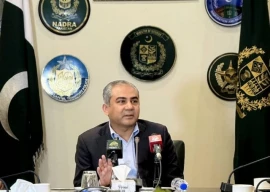
According to data compiled by an Islamabad-based think-tank, Islamabad and Azad Jammu and Kashmir were the only regions in the country where no fatalities arising from sectarian violence were reported.
Student gunned down in Karachi 'sectarian attack'
This was down from two casualties from sectarian violence reported in Islamabad during 2015, six in 2014, one in 2013, said the annual security report of the Centre for Research and Security Studies (CRSS).

By contrast, there were at least 241 murders motivated by sectarian differences during 2016. This figure was down from 304 in 2015, with sectarian violence falling by 20 per cent in the country during 2016.
While Islamabad was spared, its surrounding districts saw some of the worst sectarian violence in the year. A province-wise breakup of the data showed that Punjab registered the most 79 fatalities from sectarian violence in 2016, followed by Balochistan at 73, Sindh at 40, Federally Administered Tribal Areas (Fata) at 36, and Khyber-Pakhtunkhwa at 13.
Five killed, several injured in sectarian attack on Nazimabad majlis
“The highest fatalities from sectarian violence were recorded at the Gulshan Iqbal Park in Lahore where the Christian community was apparently targeted on their Easter Day festivities. However, only 14 out 74 people were identified as Christians. The other highest victims of sectarian violence were Sufi pilgrims at the Shah Norani Shrine,” said the report.
The report also showed that Lahore was the worst-affected city by sectarian violence Lahore with 74 killings and 250 people injured – primarily from the Gulshan-e-Iqbal park attack.

Khuzdar was second on the list of most deaths with 62. These deaths, listed under the ‘sufi’ sectarian category by the report, were from the suicide attack on the Shah Norani Shrine on November 12, 2016.
The fatalities from the attack on the shrine accounted for the most of the sectarian killings in Balochistan. Quetta accounted for most of the remaining killings with nine deaths.
Karachi was the third most violent city for sectarian violence where 38 deaths were reported – accounting for a majority of the sectarian killings in Sindh.
Mohmand followed with 36 fatalities – accounting for all of the sectarian killings in Fata.
There were no reported incidents of sectarian violence in Rawalpindi and Jhelum while Chakwal and Attock registered two and one deaths resulting from sectarian violence respectively.
Targeted attacks: Prayer leader shot dead inside mosque
Moreover, the report says that more than 70 per cent of the people who lost their lives in sectarian violence were the victims of suicide attacks.
Sindh, along with K-P, with saw the largest decline in sectarian violence. Killings in Sindh dropped to just 40 in 2016, down from 178 in 2015. In K-P, killings dropped to just 13 in 2016, down from 33 the year before.
According to the report, ‘Sufis’ and Sunnis were the most affected by religious and sectarian violence in 2016 with 62 and 48 deaths respectively. Shias were the third-most affected group, with 33 reported killings.
Published in The Express Tribune, January 15th, 2017.


















COMMENTS
Comments are moderated and generally will be posted if they are on-topic and not abusive.
For more information, please see our Comments FAQ